LIZARDS OF ABACO: ANOLES & DEWLAPS
Yesterday was World Lizard Appreciation Day (or something similar), and it is only right to acknowledge the occasion. Everyone knows about CURLY TAIL LIZARDS. Everyone loves them and their little ways. But there are other lizards that may be found on Abaco and in the wider Bahamas. ANOLES, green and brown, should not be overlooked in the global celebration. They don’t have curly tails, but they do have a special power, the ability to display a DEWLAP. These are essentially folds of neck skin that are seen in many creatures – even large ones like the moose – and which in some species are inflatable / retractable.
A while back, Abaconian Rhonda Pearce took an outstanding sequence of photos of anoles. To begin, here are some impressive dewlaps to admire.
And here are a few green and brown anoles hanging out on trees and leaves in an anoley-type way. In a couple of these images, you can see the dewlap in its non-display mode. They are all just… lizards. Non-scary, non-venomous, non-poisonous little guys that are probably a peripheral part of everyone’s experience, but which really deserve a closer look.
You can read more about anoles, including their interesting sex lives, in the excellent Wiki article HERE. Usually, this is where I put a list of the various anole-related mating rituals, but actually the Wiki entry is more comprehensive (but you don’t get free jokes).
ADDENDUM: On this topic, at Crossing Rocks I did once photograph 2 curly tails in amorous conjunction on a lorry tyre / tire.
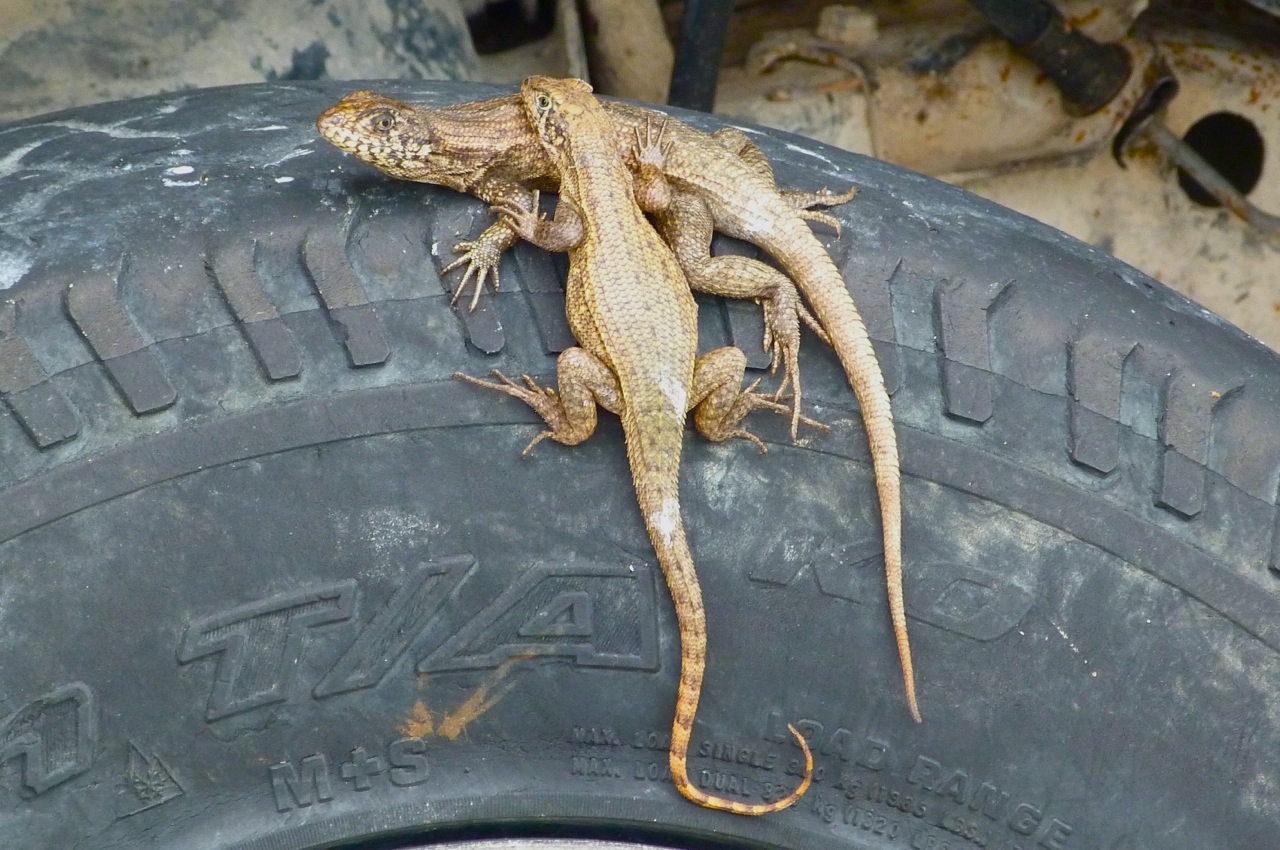
OPTIONAL MUSICAL DIGRESSION
The first time I heard the word ‘dewlap’ (misheard by the young me as ‘dewlat’) was in the mid-60s, in Georgie Fame’s excellent Ballad of Bonnie & Clyde. This song – and doubtless the film – was number 1 in the UK and maybe also the States.
I assumed then that a ‘dewlat’ was some sort of valuable gold coin – like a gold sovereign – that bank robbers put into a specially designed ‘dewlat bag’ to carry them away… Ah! The naivety of youth.
Bonnie and Clyde advanced their reputation
And made the graduation into the banking business
“Reach for the sky,” sweet-talking Clyde would holler
As Bonnie loaded dollars in the dewlap bag
Credits: all fantastic photos, Rhonda Pearce with thanks as ever; Vogue


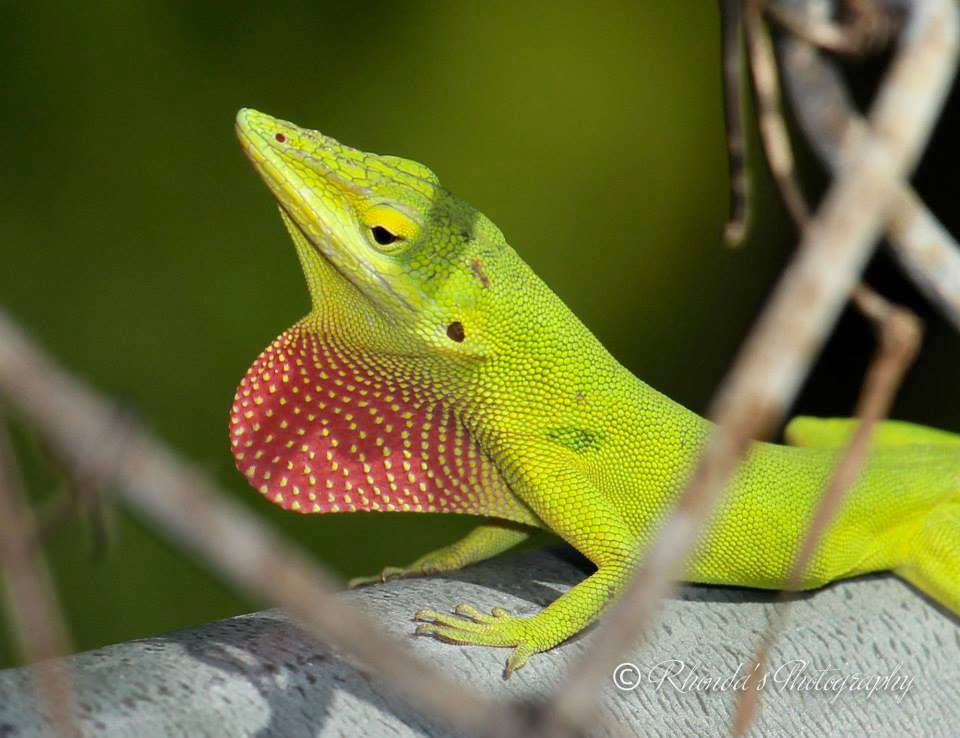






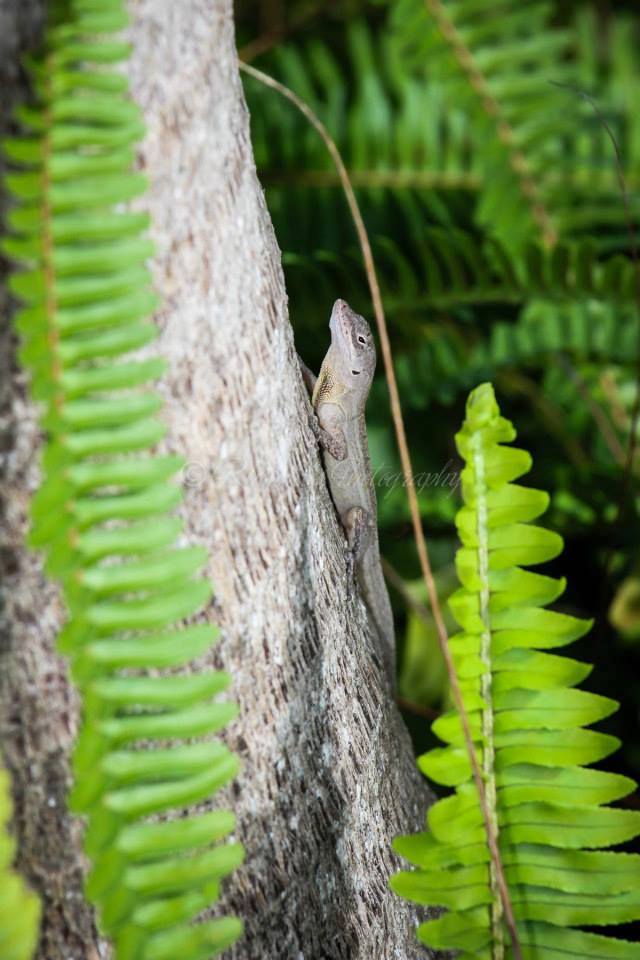

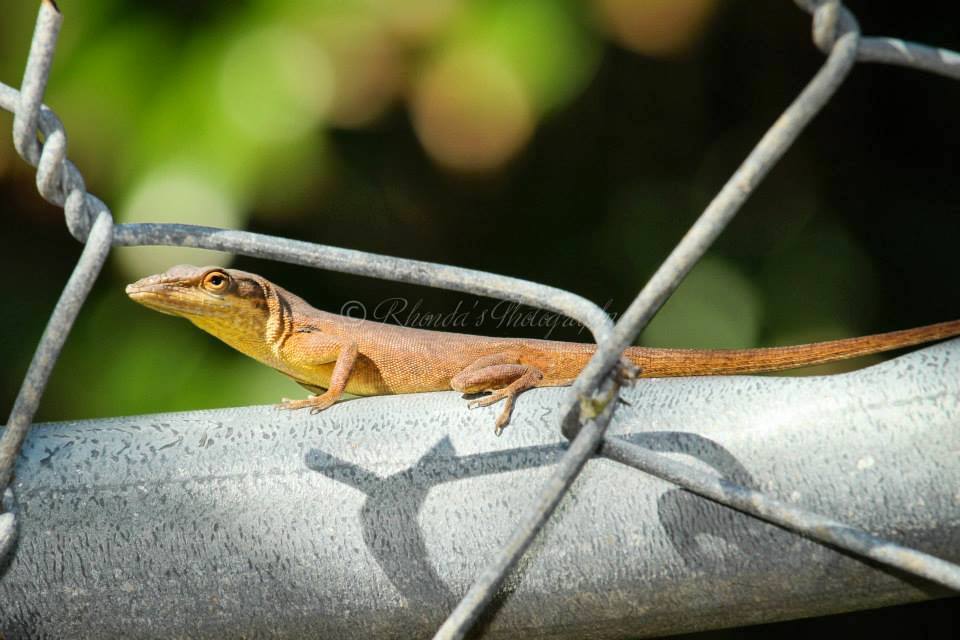













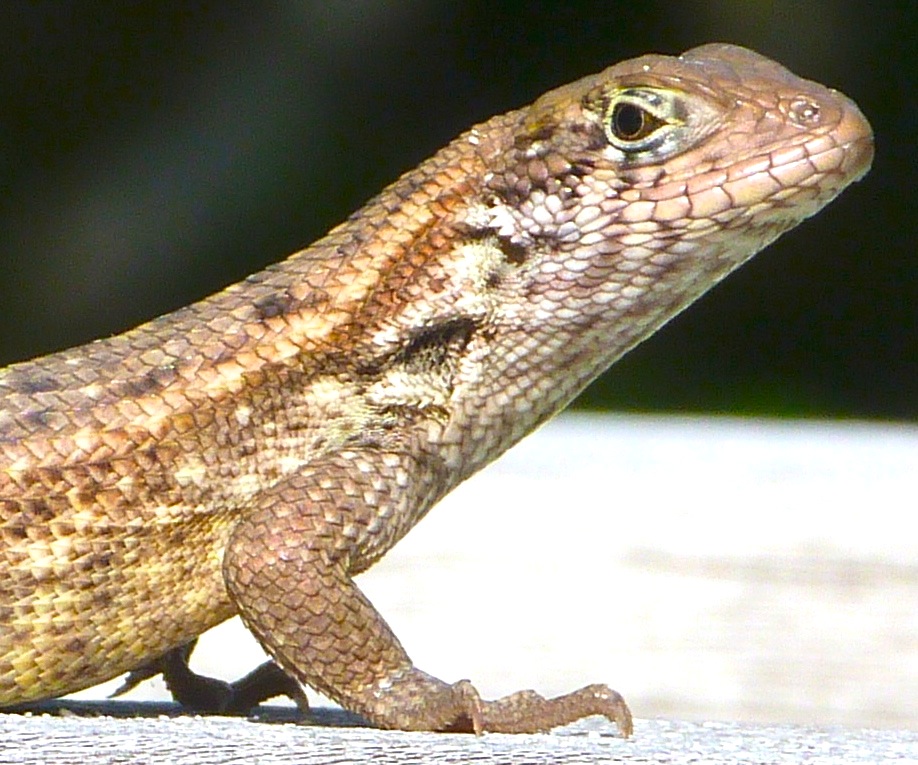
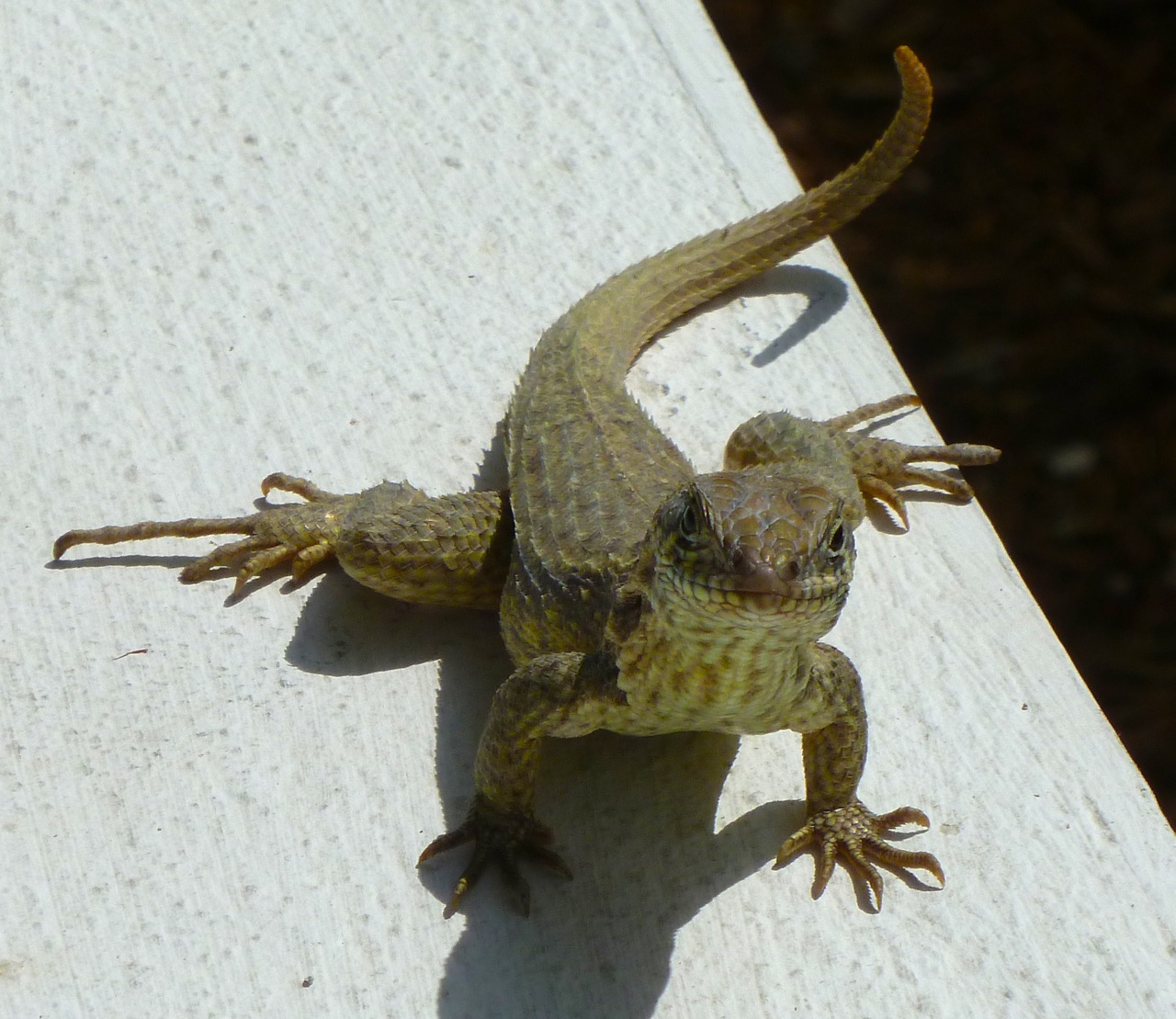


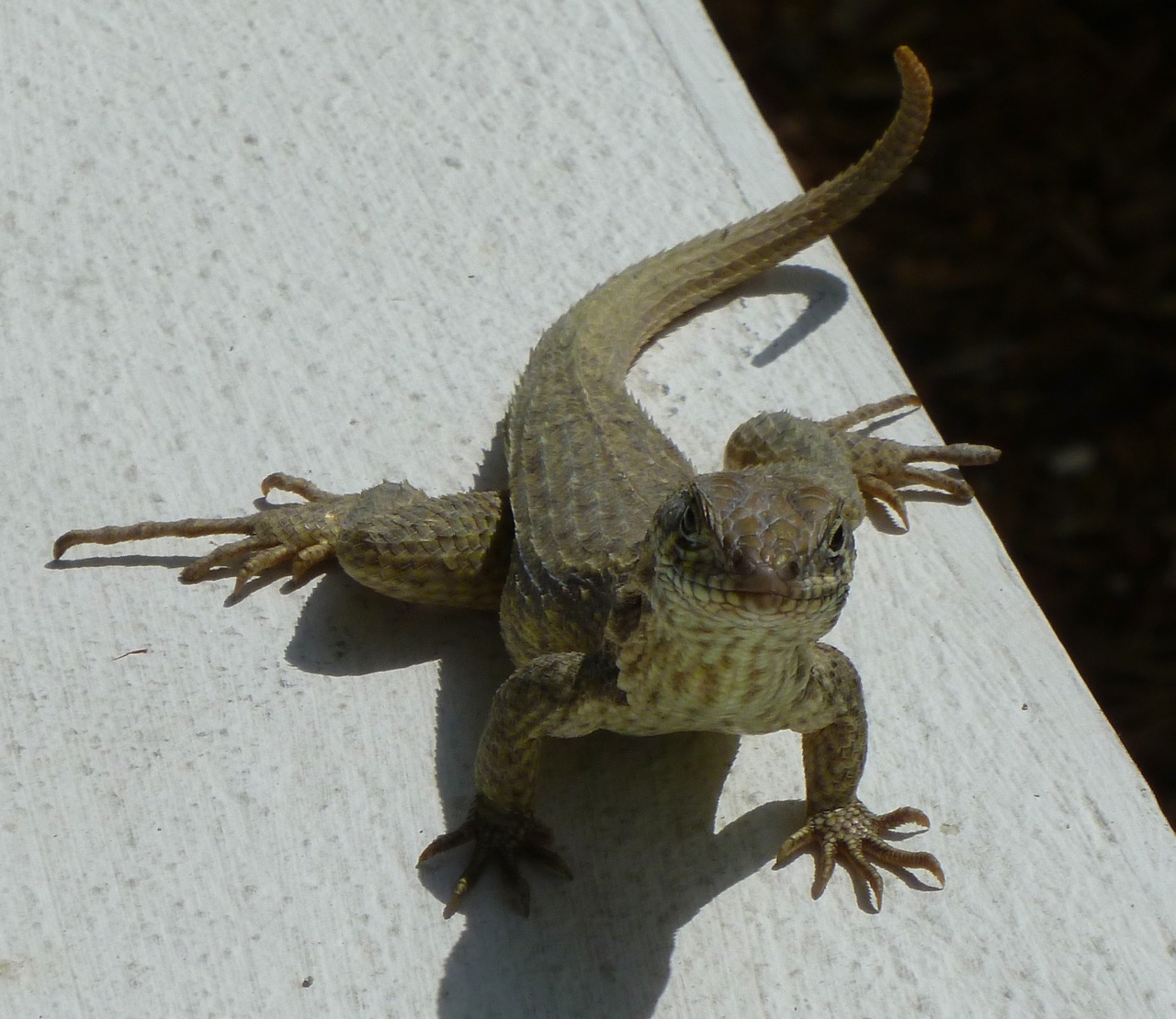




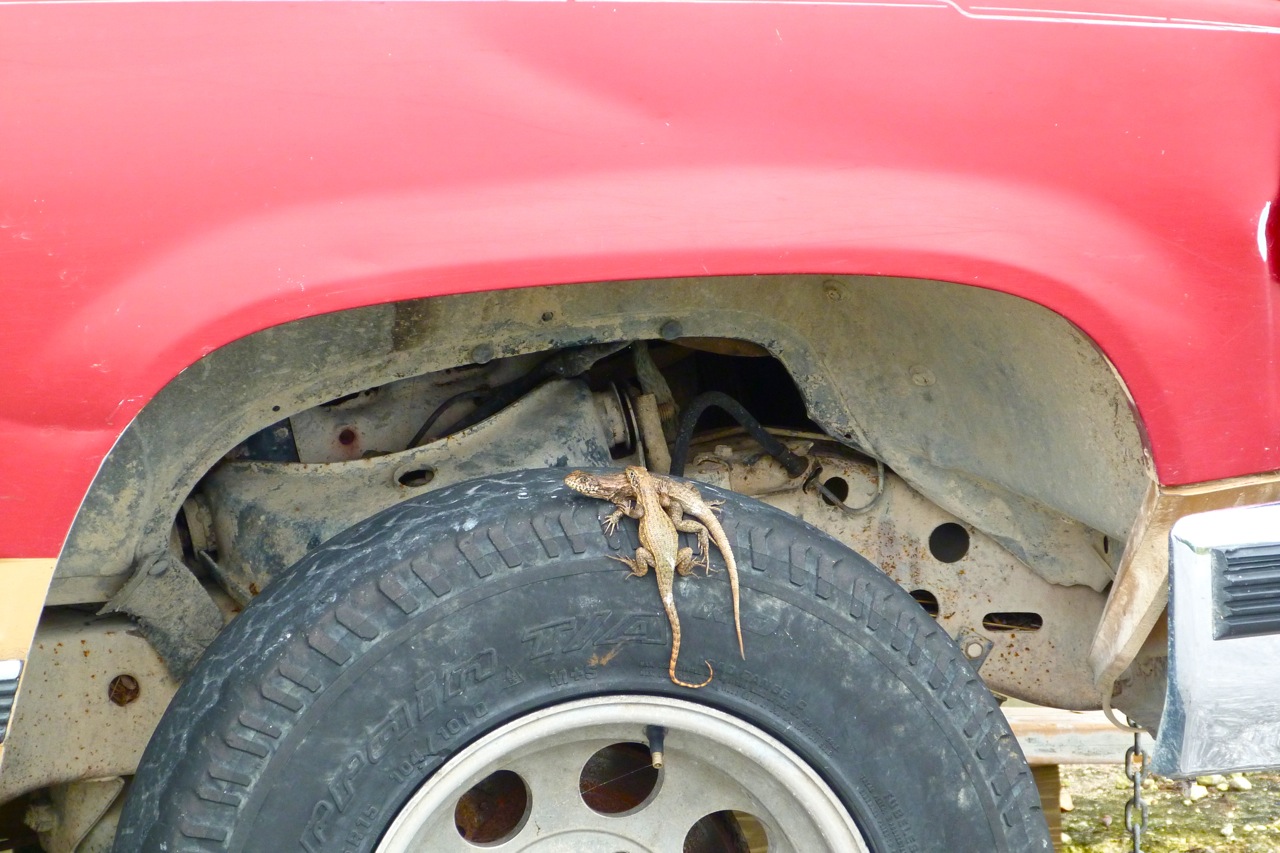

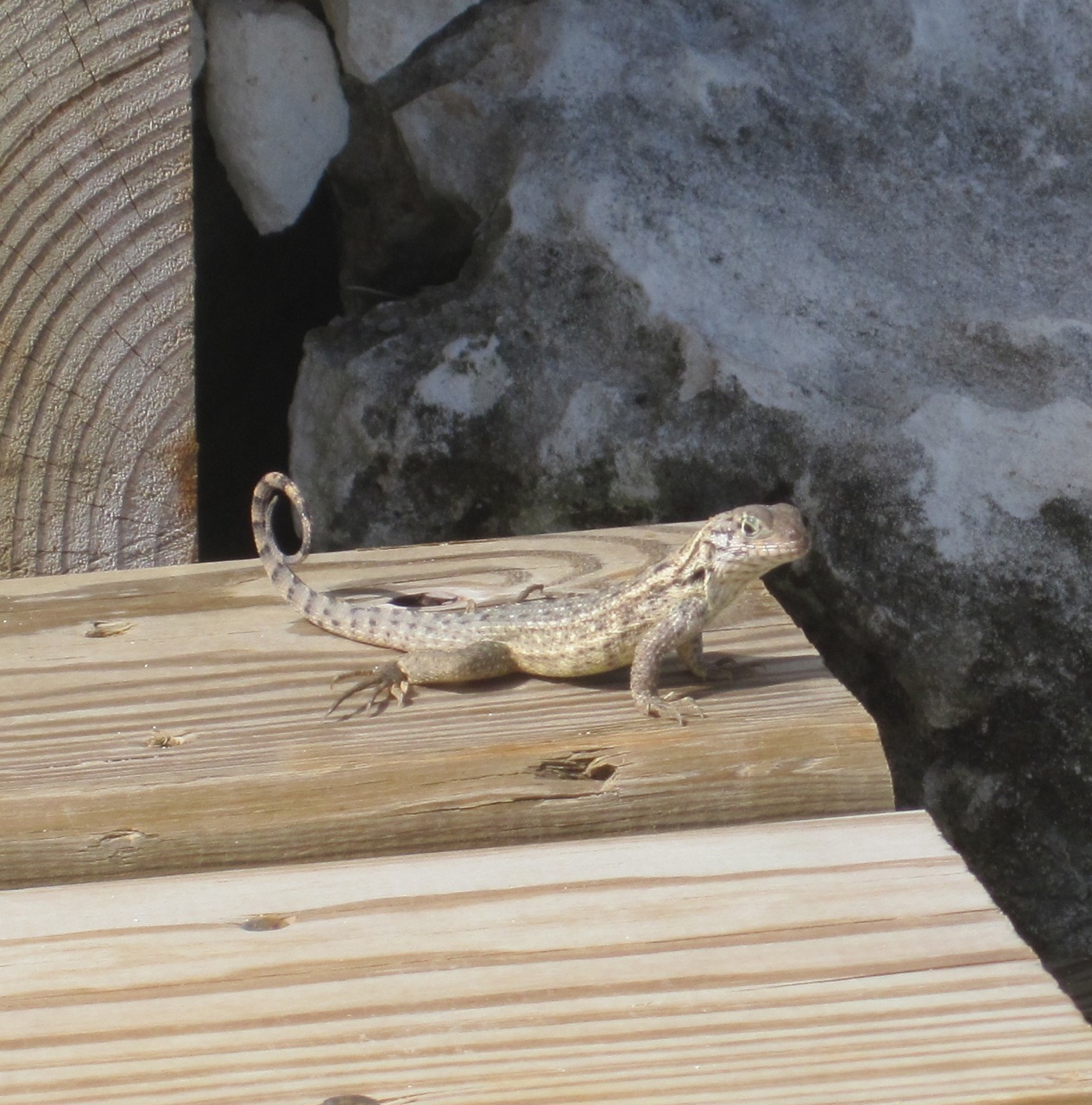



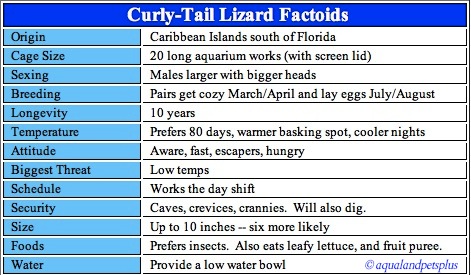




You must be logged in to post a comment.